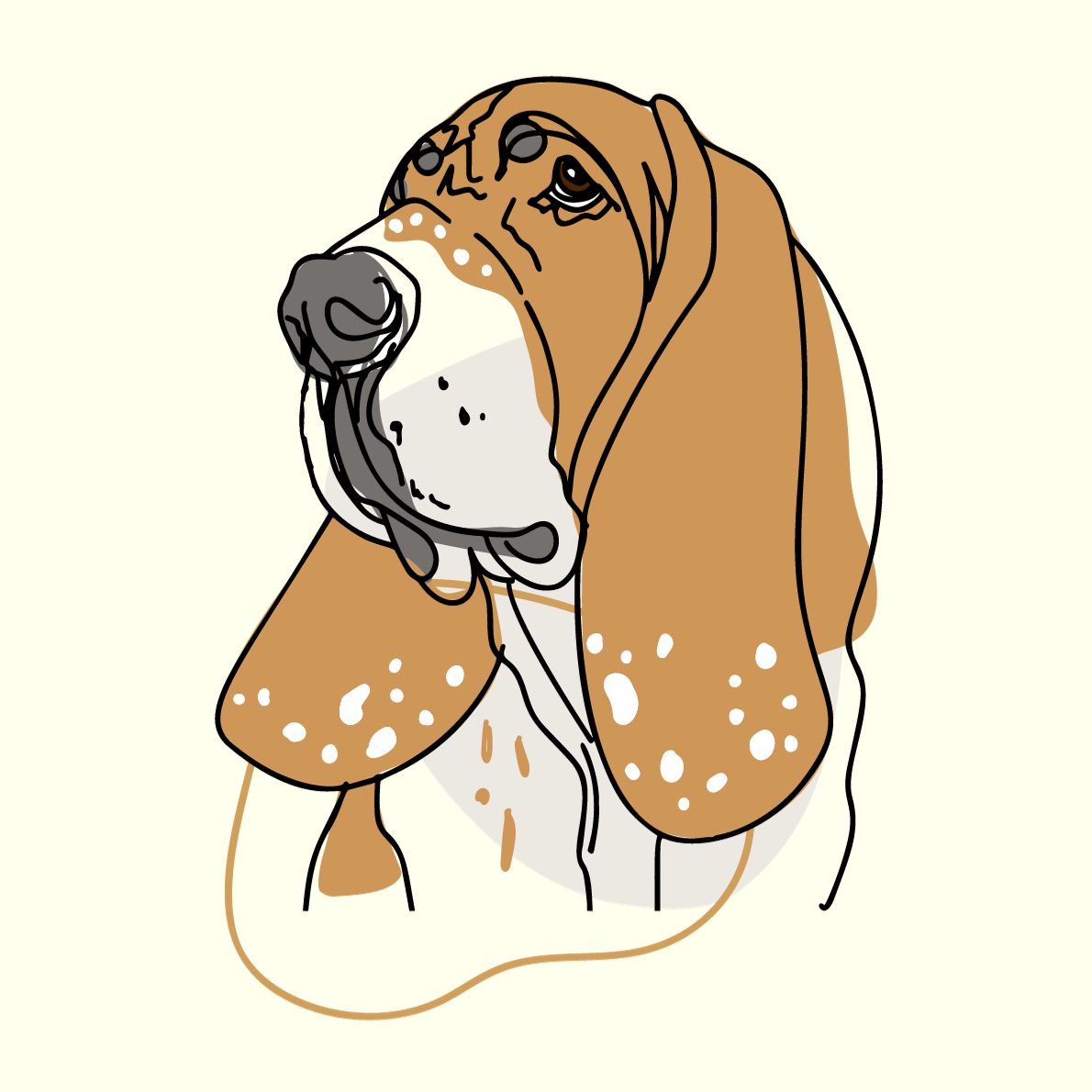Your dog may be standing in one spot due to various reasons, including discomfort, illness, anxiety, or a need for attention or physical exercise. This behaviour can be a sign of a medical issue or behavioural problem that requires further investigation and intervention from a veterinarian or professional dog trainer.
It is essential to observe your dog’s overall behaviour, eating habits and whether they show any other unusual symptoms. Observing these details can help you determine the root cause and ensure your dog’s well-being. Reach out for professional advice to address any concerns and provide the appropriate care.
Understanding The Behavior Of Dogs Standing In One Spot
Dogs standing in one spot may exhibit various behaviours due to discomfort, anxiety, fear, or sheer stubbornness. Understanding the reasons behind this behaviour can help you better address your dog’s needs and ensure their well-being.
Understanding The Behavior Of Dogs Standing In One Spot
Have you ever found yourself wondering why your dog is just standing in one spot? This peculiar behaviour can leave pet owners feeling puzzled and concerned. To help shed some light on this mystery, we’ll explore the possible reasons behind this behaviour and provide insights on how to interpret your dog’s body language.
Why Is My Dog Just Standing In One Spot? Discover The Startling Truth!
- Discomfort or pain: Your dog may be experiencing physical discomfort, such as joint pain or injury, which can cause them to remain still in one spot. It’s essential to observe any signs of discomfort or distress, such as whimpering or limping, and consult your veterinarian for a proper diagnosis.
- Fear or anxiety: Dogs may freeze in one spot when they feel scared or anxious. This behaviour can serve as their instinctual response to perceived threats or stressful situations. Keep an eye out for dilated pupils, raised hackles, or a lowered body posture, as these signs indicate fear or anxiety in dogs.
- Guarding behaviour: Sometimes, dogs may stand still in certain areas to guard their territory or possessions. This behaviour is more common in breeds with protective instincts. It’s crucial to respect your dog’s personal space and avoid approaching them when they exhibit this guarding behaviour.
- Fascination with something: Dogs can become fixated on specific sights, sounds, or smells, causing them to stand motionless. For instance, they might be captivated by a squirrel in a tree or the enticing scent of food. If your dog appears engrossed in something, give them a moment to explore their surroundings before redirecting their attention.
- Heightened focus during training: If you’re engaging in training activities with your dog, they may stand still to concentrate on the commands or cues you’re giving them. This behaviour demonstrates their attentiveness and willingness to learn, so it’s important to reward and reinforce their good behaviour during these training sessions.
- Medical conditions: In some cases, dogs standing in one spot may be a symptom of an underlying medical condition, such as neurological disorders or cognitive dysfunction. If you notice any unusual behaviour or changes in your dog’s overall demeanour, it’s advisable to seek professional advice from a veterinarian.
- A moment of reflection: Dogs, like humans, may occasionally stand still to observe their surroundings and gather their thoughts. This introspective behaviour is natural and allows them to take in their environment calmly and composedly. Embrace these moments of reflection and provide your furry friend with a peaceful atmosphere to gather their thoughts.
Understanding your dog’s body language is key to deciphering their motives when they stand in one spot. By being attentive to their overall demeanour, you can determine whether it’s discomfort, fear, curiosity, or simply a moment of tranquillity. Remember to provide a safe and nurturing environment for your canine companion, and consult a professional if you have any concerns about their behaviour.
Physical Health Factors
One possible response: “If your dog is standing in one spot, it could be due to physical health factors such as pain, injury, or discomfort. It’s essential to consult with a veterinarian to determine the underlying cause and provide necessary treatment.
Dogs can exhibit many peculiar behaviours that leave their owners puzzled, and one particular behaviour that can cause concern is when a dog stands in one spot for an extended period of time. This seemingly odd behaviour can have various underlying physical health factors that may contribute to it.
By understanding and identifying these factors, you can ensure that your furry friend receives the proper care and attention they need.
Identifying Medical Conditions That May Cause The Behavior:
- Orthopaedic issues: Dogs suffering from orthopaedic issues such as arthritis or joint pain may prefer to stand still to alleviate discomfort or pain. Some common orthopaedic conditions that can affect dogs include hip dysplasia and cruciate ligament injuries.
- Neurological disorders: Certain neurological disorders can lead to a dog standing motionless in one spot. Conditions such as vestibular disease, which affects the dog’s sense of balance, or spinal cord injuries can contribute to this behaviour.
- Sensory deficiencies: Dogs rely heavily on their senses, and if they are experiencing a decline in their sensory abilities, it may cause them to stand in one place. Loss of vision or hearing impairments can make dogs feel more secure and stable when they remain stationary.
Consulting A Veterinarian For Proper Diagnosis:
If you notice your dog constantly standing in one spot and it seems out of the ordinary, it is vital to consult with a veterinarian. They will conduct a thorough examination and may perform diagnostic tests to determine the underlying cause of your dog’s behaviour.
A proper diagnosis will help guide the appropriate treatment plan to address the specific medical condition.
Remember, each dog is unique, and what applies to one may not apply to another. Consulting a veterinarian is crucial for an accurate diagnosis and tailored treatment plan. Don’t hesitate to reach out to a professional to ensure the well-being of your beloved canine companion.
Behavioral Causes
If your dog is standing in one spot without moving, it could be due to behavioural causes. This behaviour may be a result of anxiety, fear, or territorial marking. It’s important to observe your dog’s body language and consult with a professional to address any underlying issues.
Behavior Causes
If you ever find your dog standing in one spot for an extended period of time, it could indicate a behavioural issue. Dogs exhibit various behaviours for different reasons, and understanding these causes can help you address and resolve them effectively.
Here are some potential behavioural reasons behind your dog’s stationary behaviour:
Separation Anxiety And Loneliness:
- Feeling anxious and lonely can cause dogs to stand in one spot as a coping mechanism.
- This behaviour often occurs when dogs are left alone for long periods without any company or mental stimulation.
Fear, Anxiety, And Stress Triggers:
- Dogs may stand still in response to fear, anxiety, or stress triggers in their environment.
- Common triggers include loud noises, unfamiliar surroundings, or the presence of other animals or people.
- In such situations, dogs may freeze to assess the situation or seek safety.
Monotony And Lack Of Mental Stimulation:
- A lack of mental stimulation or engaging activities can lead to dogs standing motionless.
- Dogs, like humans, need mental exercise to prevent boredom and promote a healthy state of mind.
- Without proper mental stimulation, dogs may feel uninterested and become inactive.
Understanding the behavioural causes behind a dog standing in one spot is the first step in addressing the issue. By recognizing any separation anxiety, fear, anxiety, stress triggers, and the need for mental stimulation, you can implement strategies to help your dog overcome these behaviours.
Whether it involves providing regular companionship, creating a safe and calm environment, or introducing interactive toys and games, taking action can significantly improve your dog’s overall well-being. Remember that patience and consistency are key when dealing with behavioural issues in dogs.
Environmental Factors
Environmental factors can play a role in why your dog is standing in one spot. It could be due to extreme weather conditions, unfamiliar surroundings, or a sensory overload from loud noises or strong smells. These factors can affect your dog’s behaviour and make them hesitant to move.
Environmental Factors
Dogs are fascinating creatures, aren’t they? Sometimes, they exhibit peculiar behaviour that leaves us puzzled. One such behaviour is when our furry friends just stand in one spot. While this can be perplexing, it’s important to consider the various environmental factors that may contribute to this behaviour.
Let’s take a closer look at some potential reasons why your dog might be standing in one spot:
Unfamiliar Surroundings And New Environments:
- Change in the environment: Dogs thrive on routine and familiarity. When introduced to a new environment, such as a park or a friend’s house, they might feel unsure and choose to stand still. This could be due to a sense of caution or simply taking time to adjust.
- Overwhelm: Certain locations may be overwhelming for our four-legged pals. Being surrounded by new sounds, smells, or bustling activity can lead to a momentary pause as they observe and process their surroundings.
- Anxiety or fear: Dogs can experience anxiety or fear in new surroundings. This might cause them to freeze in place as they assess the situation and decide on the best course of action.
Extreme Weather Conditions:
- Heat exhaustion: Dogs are susceptible to overheating in extreme heat. When the temperature rises significantly, they may stand still to conserve energy and avoid exerting themselves further.
- Cold discomfort: On the flip side, extreme cold can also cause dogs to stand in one spot. They may be seeking warmth or trying to protect their paws from freezing temperatures.
Presence Of Triggering Stimuli:
- Fascination with something: Dogs have a keen sense of smell and are naturally curious. If they detect an intriguing scent or spot something captivating, they may momentarily remain still to investigate further. It could be a small critter scurrying by or a distant noise piquing their interest.
- Potential threat: Dogs are adept at sensing danger. If they sense a potential threat nearby, they may freeze as part of their fight-or-flight response. This behaviour allows them to assess the situation and determine the appropriate action to take.
Understanding the environmental factors that can cause your dog to stand in one spot will help you better interpret their behaviour. Keep in mind that every dog is unique, and individual personalities and past experiences can influence their reactions to different environments.
By staying observant and patient, you can support your furry companion in navigating unfamiliar or challenging situations.
Social And Emotional Factors
Understanding why your dog is standing in one spot involves considering social and emotional factors. By examining your dog’s behaviour, body language, and overall well-being, you can gain insights into their state of mind and any underlying issues that may be causing this behaviour.
There can be several reasons why your dog might choose to stand in one spot rather than move around. While it’s important to rule out any medical causes, such as pain or mobility issues, certain social and emotional factors can also play a role in this behaviour.
Understanding these factors can help you address the issue appropriately and ensure your furry friend’s overall well-being. In this section, we will explore the social and emotional factors that may contribute to your dog’s tendency to stand in one spot.
Socialization And Past Traumatic Experiences:
- Lack of exposure to different environments, people, and other animals during their critical socialization period can lead to fear and anxiety later in life.
- Dogs that have experienced traumatic events, such as abuse or neglect, may be more prone to displaying avoidance behaviours, including standing in one spot.
- A lack of positive experiences and social interactions during early development stages can negatively impact a dog’s ability to feel comfortable and secure in various situations.
Lack Of Companionship And Attention:
- Dogs are social animals and thrive in the company of humans and other animals. They may become emotionally distant or exhibit behaviours like standing in one spot if they lack regular companionship and attention.
- Too much time spent alone or confined without stimulation can also lead to boredom and frustration, causing a dog to adopt a static posture.
- Inadequate mental and physical exercise can contribute to restlessness or pent-up energy, leading to behaviours like standing in one spot.
Emotional Distress And Depression:
- Dogs, like humans, can experience emotional distress and even depression. Major life changes, such as the loss of a family member or home, can trigger such feelings.
- Dogs who have undergone significant changes, such as being rehomed or rescued, may take time to adjust to their new environment. During this adjustment period, standing in one spot can be a manifestation of their emotional state.
- Traumatic experiences, separation anxiety, or other emotional disturbances can all contribute to a dog’s overall emotional distress, leading to odd behaviours like standing in one spot.
Understanding the social and emotional factors that may contribute to a dog’s tendency to stand in one spot is crucial in addressing their needs effectively. By providing appropriate socialization opportunities, companionship, attention, and therapeutic interventions, you can help your beloved pet overcome any emotional challenges they may be facing.
Remember, patience, understanding, and professional guidance, if needed, can go a long way in improving your dog’s holistic well-being.
Training And Behavior Modification
Discover the reasons behind your dog’s behaviour of standing in one spot with our effective training and behaviour modification techniques. We provide expert guidance to help you address this issue and encourage positive changes in your furry friend’s behaviour.
Training And Behavior Modification
If you find your dog standing in one spot frequently, it may be a sign of an underlying issue that requires training and behaviour modification. Here are some techniques that can help address this behaviour:
Positive Reinforcement Techniques:
- Reward your dog with treats or praise when they move from one spot to another, encouraging them to explore their surroundings.
- Use a clicker to establish a positive association with the movement, reinforcing each step your dog takes away from the stationary spot.
- Engage your dog in interactive play sessions to stimulate their natural instincts and encourage movement.
Professional Training And Obedience Classes:
- Enroll your dog in professional training programs or obedience classes to address any behavioural issues they might have.
- A professional trainer can assess and identify the root cause of your dog’s behaviour, providing tailored training techniques to encourage movement and reduce their tendency to stand still.
Gradual Desensitization And Counterconditioning:
- Gradually expose your dog to new environments, objects, or people to encourage movement and alleviate any fear or anxiety they may have.
- Counterconditioning involves associating positive experiences with movement, helping your dog overcome any negative associations they may have developed.
- Consult with a professional behaviourist to create a customized desensitization and counterconditioning plan for your dog.
By utilizing positive reinforcement techniques, seeking professional assistance, and implementing gradual desensitization and counterconditioning, you can help your dog overcome their habit of standing in one spot. Remember, patience, consistency, and understanding are key when modifying your dog’s behaviour.
Providing Support And Enrichment
If you’re wondering why your dog is just standing in one spot, it could be due to a variety of reasons, such as fear, discomfort, or simply being lost in thought. Providing support and enrichment through exercise, mental stimulation, and a calm environment can help address this behaviour.
Providing Support And Enrichment
Having your dog suddenly standing in one spot can be quite puzzling. If your furry friend seems immobile and unresponsive, it’s important to address their needs and well-being. Providing support and enrichment is crucial in helping your dog overcome this behaviour.
By establishing a structured routine, engaging in interactive play and exercise, and creating a safe and enriching environment, you can help your dog become more active and content.
Establishing A Structured Routine:
- Consistency is key: Dogs thrive on routine, so establish a daily schedule for feeding, exercise, and playtime. Stick to this routine as closely as possible.
- Regular meal times: Feed your dog at the same times each day to support their digestive health and maintain a sense of stability.
- Scheduled bathroom breaks: Take your dog outside for bathroom breaks at consistent intervals throughout the day, ensuring they have ample opportunity to relieve themselves.
Engaging In Interactive Play And Exercise:
- Physical exercise: Dogs need regular exercise to remain healthy and engaged. Take your dog for daily walks, engage in interactive games of fetch or tug-of-war, or consider enrolling them in doggy sports such as agility or flyball.
- Mental stimulation: In addition to physical exercise, provide your dog with mental stimulation through puzzle toys, treat-dispensing games, or training sessions. This helps keep their mind sharp and prevents boredom.
Creating A Safe And Enriching Environment For Your Dog:
- Provide a comfortable space: Ensure your dog has a designated and cozy spot to relax, such as a comfortable bed or crate. This gives them a sense of security and ownership.
- Offer a variety of toys: Keep your dog engaged by providing a range of toys that cater to different play styles. This can include plush toys, chew toys, puzzle toys, or interactive toys.
- Rotate toys regularly: To prevent monotony, rotate your dog’s toys every few days. This keeps their interest piqued as they encounter new and exciting playthings.
- Consider environmental enrichment: Introduce new smells, sounds, and sights to your dog’s environment. This can be done through puzzle feeders, hiding treats or toys around the house, or playing calming music or nature sounds.
By implementing these strategies and providing the necessary support and enrichment, you can help your dog overcome the behaviour of standing in one spot. Remember, understanding your dog’s needs and providing them with a structured routine, interactive play and exercise, and a safe and enriching environment will lead to a happier and more active furry companion.
Frequently Asked Questions For Why Is My Dog Just Standing In One Spot
Why Is My Dog Just Standing Still And Not Moving?
Your dog may be standing still and not moving due to various reasons, such as pain, fear, or an unfamiliar environment.
Why Is My Dog Just Standing And Staring Into Space?
If your dog is standing and staring into space, it might be deep in thought or experiencing a sensory stimulus.
Why Do Old Dogs Just Stand And Stare?
Old dogs may stand and stare due to various reasons, such as cognitive decline or sensory changes.
How Do You Know If Your Dog Has Had A Stroke?
Signs of a dog having a stroke include sudden paralysis, loss of balance, difficulty walking, and head tilt.
Conclusion
To better understand why your dog might be standing in one spot, it is essential to consider various factors. First and foremost, it may be a sign of pain or discomfort. If your dog is experiencing any kind of physical discomfort, it could lead to them avoiding movement and remaining in one position.
Additionally, dogs may display this behaviour due to anxiety or fear. Sudden changes in their environment or the presence of a loud noise can trigger this response. Another reason could be that your dog is simply enjoying their surroundings. They might be captivated by a particular scent, sound, or sight, causing them to stand still and take it all in.
However, if this behaviour persists and you are concerned, it is always advisable to consult with a veterinarian to rule out any underlying health issues. Remember, understanding your dog’s behaviour is key to ensuring their overall well-being and happiness.




